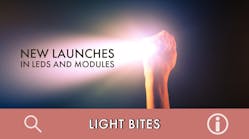Still looking for cash to pay for Osram, ams has a new idea (UPDATED)
As ams awaits regulatory approval for its acquisition of Osram, it is addressing a number of other matters related to the move, including how to pay for it. On that front, the company has a new idea: It could issue convertible notes and other financial instruments.
The Austrian sensor company will ask shareholders to approve those measures on June 3 at its annual general meeting (AGM). AMS revealed its intention in a document this week in which it outlined several proposals it will put forth at the online gathering.
Premstaetten-based ams would use the funds to help pay off a €4.4 billion ($4.95B)** bridge loan it took to finance the acquisition of Munich-based Osram. Earlier this year, it won shareholder approval to raise €1.65B ($1.82B) of the repayment via the sale of new stock.
It has said all along that it would pay the €2.76B ($3.08B) balance via debt. This week, it provided more details, citing measures it would take within German corporate law known as AktG.
“AMS continues to aim at refinancing the remaining bank financing as quickly as possible in order to further reduce financing costs in favor of the company and to optimize its capital and financing structure,” ams stated in its proposal. “Therefore, the opportunity should be created to refinance a further part of the total financing volume by issuing financial instruments within the meaning of sec. 174 AktG, in particular convertible notes, profit participation bonds, or profit participation rights.”
The proposal did not make clear how much of the €2.76B the measures could raise.
AMS said that notes, bonds, and profit participation would be less costly than outright selling shares, and would attract new groups of investors. While the convertible instruments would lead to some new shares in the company, ams said it would limit the rights of the owners of those shares (more details on the ams website).
The company had hoped for an easier recourse in which it could have accessed Osram’s cash to help pay off the loan. But ams did not manage to acquire enough of Osram shares to gain access to that money. It would have needed 75% to achieve what German law considers a “domination agreement.” It fell well short at 59.9% in a public market takeover late last year and thus gained governing control but not cash control. It is believed to have nudged up its ownership to around 64% since then, still below the domination level.
Three months ago, ams said it would seek another way of gaining domination by asking Osram shareholders for domination permission. The Osram approval would come via an extraordinary general meeting of Osram shareholders. LEDs Magazine has asked ams a couple of times since March for an update on that plan, but ams has not replied.
The lack of domination has also hindered the integration of the two companies.
Meanwhile on the management front, ams has proposed in advance of the June 3 AGM that “in the light of the acquisition of Osram,” the four-person ams management board should expand to five. It did not specifically propose who that individual should be, or state that the person should come from Osram. It made no mention of Osram CEO Olaf Berlien.
Earlier this month, former Osram CFO Ingo Bank took over the CFO job at ams, with outsider Kathrin Dahnke taking over as Osram CFO.
AMS has said it expects to receive regulatory approval for the Osram acquisition this quarter. Its €41 ($45.40) per share takeover valued Osram at €4.58B ($5.07B).
The €4.4B** bridge loan that it has been paying off is from three banks: Bank of America Merrill Lynch International Designated Activity Company based in Dublin; HSBC Bank plc based in London; and UBS Europe SE based in Frankfurt.
MARK HALPER is a contributing editor for LEDs Magazine, and an energy, technology, and business journalist ([email protected]).
*Editor’s note: ams reports financials in USD while Osram reports in EUR; currency is provided in both EUR and USD for consistency. Currency is provided based on the original time of reporting the financial details.
**Correction notice, Jul. 1, 2020: Earlier LEDs Magazine stories have reported the €4.4B as €3.97B, for reasons possibly related to how much of the loan had been drawn down. While we have been reporting the parts correctly at €2.76B and €1.65B, we have been misstating their sum. We apologize for the error, which we have now spotted in articles on May 14, Jan. 29, Jan. 24, Jan. 13, and Jan. 3.
Updated Jul 1, 2020.
For up-to-the-minute LED and SSL updates, why not follow us on Twitter? You’ll find curated content and commentary, as well as information on industry events, webcasts, and surveys on our LinkedIn Company Page and our Facebook page.

Mark Halper | Contributing Editor, LEDs Magazine, and Business/Energy/Technology Journalist
Mark Halper is a freelance business, technology, and science journalist who covers everything from media moguls to subatomic particles. Halper has written from locations around the world for TIME Magazine, Fortune, Forbes, the New York Times, the Financial Times, the Guardian, CBS, Wired, and many others. A US citizen living in Britain, he cut his journalism teeth cutting and pasting copy for an English-language daily newspaper in Mexico City. Halper has a BA in history from Cornell University.





